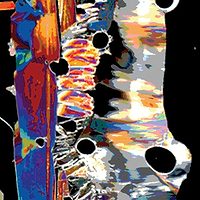The Korea Beekeeping Association (KBA) was founded in 1967 to promote apiculture development in Korea; to protect consumers through high-quality testing for honey; and to conduct research, advertising and promotion programs to help maintain and expand domestic and foreign markets for honey. Located in Seoul, the KBA today employs 21 people to fulfill these goals.
Increasing concern over the presence of antibiotics and pesticide residues in foodstuffs and the related potential health threats to humans have required food quality-control laboratories to develop fast and efficient methods of detecting these contaminants. Some of the challenges facing these organizations include their need for multi-component quantitation, desire for limited or no sample preparation and requirement of an automated, online method to make quality control screening cost-effective.
Because KBA is responsible for testing products that are exported worldwide, the organization has the added pressure of following regulations from countries around the world in addition to the Korean Food and Drug Administration, which sets the standards for pesticide residues and conducts toxicology research in that country.
The Challenge
The large number and variety of potential contaminants in honey presented a challenge to the KBA. Current screening techniques for the incidence of antibacterial agent residues in food matrices typically require solvent extraction followed by an analyte-specific cleanup process. In addition, chromatographic techniques are technically complicated, time consuming and expensive to run as preliminary sample screening tools.
The organization needed to find an analytical solution that could detect multi-component antibiotics simultaneously and at low levels. The KBA decided that a simultaneous screening method for the multiple classes of antibiotics and acaricides at trace levels in honey was best served by a LC-MS/MS technique.
“Other techniques like HPLC, LC/MS, and GC/MS could only detect a small number of analytes at one time,” says Hye-Sook Oh, Laboratory Manager, Korea Beekeeping Association. “We needed to identify multiple contaminants as well as process a fairly large number of samples, approximately 50 at one time. Plus, we preferred the advantages of limited or no sample preparation and an online analysis technique to make the screening cost-effective.”
The Solution
The KBA discovered that LC-MS/MS using the Thermo Scientific Transcend system powered by TurboFlow™ technology presented the best potential as a technique for antibiotic residue analysis in honey, in contrast to utilizing offline sample preparation.
“The Transcend™ coupled with MS/MS met our organization’s goals of both increasing the analysis throughput and acquiring higher reproducibility because of its capability for automation,” Oh says. “We were pleased with the system’s ability to provide a sensitive and reliable analytical method in order to detect a full range of antibiotics. Now we can ensure Korean honey samples are free of contaminants, which in turn helps us assure both the consumer and the global marketplace about the safety of our products.”
When used with the company’s TSQ Quantum Ultra triple quadrupole mass spectrometer, the Transcend system delivers fast, efficient quantitative results with the lowest ion suppression and chemical noise. This results in highly sensitive bioanalytical methods, development of more robust methods and a reduction in analysis failures. This is the only instrument that enables highly selective reaction monitoring (H-SRM) performance, allowing scientists to analyze complex samples quickly and efficiently. H-SRM can eliminate chemical noise, lower detection limits and reduce the likelihood of generating false positives.
Business Benefit
“We found that using the Transcend system with TurboFlow technology was a powerful analytical method for the testing of antibiotics and pesticides in honey,” Oh says. “Our pre-injection sample preparation was virtually eliminated. This advantage alone enables us to carry out the analysis in only 17 minutes, compared to between five and 10 hours using our traditional offline method. In addition, eliminating the consumption of cartridges and solvent has significantly reduced analytical costs.”
The system also assisted KBA researchers in reducing matrix effects—a typical challenge in LC-MS/MS analysis. This enables KBA scientists to directly inject samples into the LC-MS/MS system prior to analysis, a significant advantage in analyses where extensive sample preparation is time-consuming and costly. The system and mass spectrometer together deliver fast and efficient quantitative results with the lowest ion suppression and chemical noise.
Conclusion
The KBA found that this system coupled with MS/MS is a powerful analytical method to test for antibiotics and pesticides in honey. Pre-injection sample preparation is virtually eliminated, saving labor costs as well as increasing productivity. A detection limit of 1 ng/ml is well below the maximum residue limit of the antibiotics tested. The KBA method proved to be a valuable tool for the determination of antibiotics and pesticides in honey samples and presents future applications for a larger range of antibiotic contaminants and possibilities for the screening of other veterinary drugs in agricultural food product matrices.
www.thermo.com/transcend
LC-MS/MS Analysis of Antibiotics and Pesticide Residues



